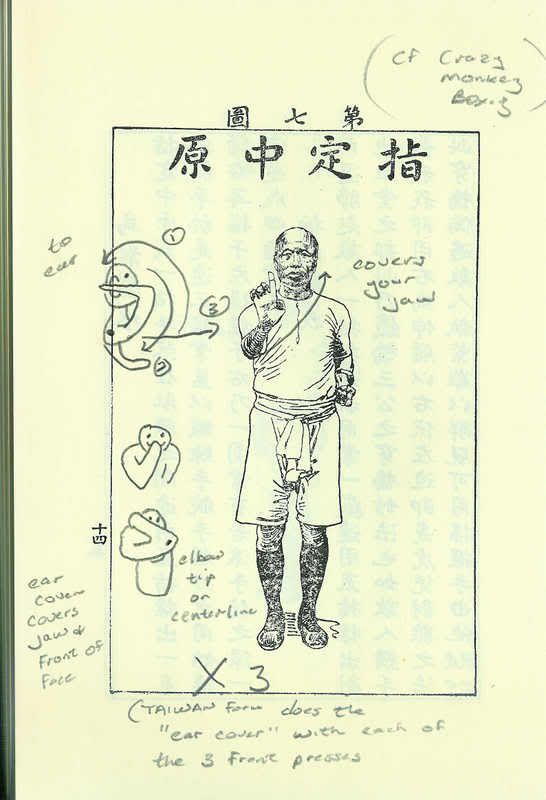brianlkennedy
Orange Belt
Here in Taiwan you see some interesting variations on the different Hung Gar ([FONT=新]洪拳[/FONT]) forms. The different Taiwanese hung gar lines keep the same basic Pillar Forms as you see in the Hong Kong/Southeast China linesbut how they do the forms oftentimes have slight (or not so slight) differences.
The only hung gar form I really study much anymore is the Tiger and Crane form ([FONT=新]虎鶴雙拳[/FONT]) and one of the differences that I have seen is in this move which is called "Point at Central Plain" (a reference to the heartland of China the central plain between the major rivers).

For my own training manual I start with Lam Sai Wings ([FONT=新]林尚榮[/FONT]) (1861-1942) manual and then added notes on the Taiwanese versions I see. Which brings me to the point of this post (no pun intended); in the Taiwanese versions when the hand pulls back to next to the ear the elbow crosses your face, which protects your jaw. And that is always a good thing! But I notice that it feels more awkward than keeping the elbow pointing straight ahead (which is how I was taught in the Hong Kong-Hawaii version I learned so many years ago).
For the hung gar folks, how do you do this move. And what do you see as the point of this move.
Take care,
Brian
If every true Chinese would but raise one finger, the Qing would be overthrown and Ming would be restored
Motto of anti-Qing forces in the south of China
The only hung gar form I really study much anymore is the Tiger and Crane form ([FONT=新]虎鶴雙拳[/FONT]) and one of the differences that I have seen is in this move which is called "Point at Central Plain" (a reference to the heartland of China the central plain between the major rivers).

For my own training manual I start with Lam Sai Wings ([FONT=新]林尚榮[/FONT]) (1861-1942) manual and then added notes on the Taiwanese versions I see. Which brings me to the point of this post (no pun intended); in the Taiwanese versions when the hand pulls back to next to the ear the elbow crosses your face, which protects your jaw. And that is always a good thing! But I notice that it feels more awkward than keeping the elbow pointing straight ahead (which is how I was taught in the Hong Kong-Hawaii version I learned so many years ago).
For the hung gar folks, how do you do this move. And what do you see as the point of this move.
Take care,
Brian
If every true Chinese would but raise one finger, the Qing would be overthrown and Ming would be restored
Motto of anti-Qing forces in the south of China
